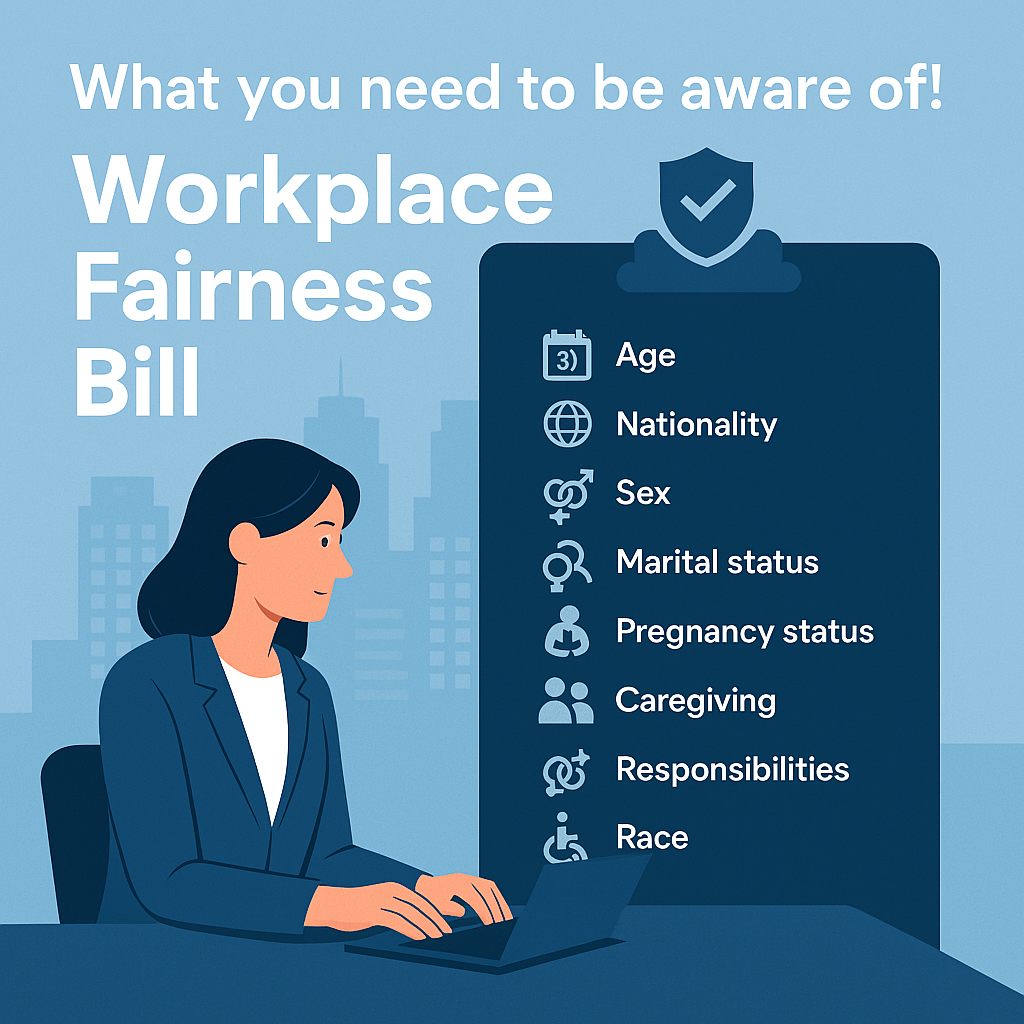
Dr Barry Jay Epstein, Accounting Expert at Epstein + Nach LLC
During an out-of-court restructuring or a Chapter 11 bankruptcy[1] process, restructuring professionals do not uncommonly hear the statement (or think to themselves): “If only we could have gotten involved sooner.” Oftentimes, business managers that ignore warning signs of distress, apply short-term fixes, or delay restructurings only “dig a deeper hole,” destroying value for stakeholders and jeopardizing the enterprise. Inefficiencies and losses compound over time, “shortening the runway” to achieve a turnaround by, among other things, draining resources and diminishing credibility of the managers (critical currency in any distress environment). In such an environment, where cash reserves and time horizons (or lack thereof) can dictate success or failure, commencing a restructuring process later rather than sooner can greatly diminish the likelihood of rehabilitation. In this regard, we believe that auditors may be uniquely positioned to serve as the sentries that alert managers to issues and facilitate those difficult conversations and perhaps even suggest the need to hire a restructuring attorney or other outside professionals.
Auditors are in the prime position to identify risk of business failure
The role of the auditors, whether for publicly-held companies or for private firms, is to express an opinion on whether the reporting entity’s financial statements are fairly presented in accordance with generally accepted accounting principles (or other stated basis of accounting, such as the cash or tax bases, or in conformity with international financial reporting standards). Fundamental to the expression of this opinion is an assessment of whether the entity is, as of the date of the financial statements, likely to remain a “going concern.”[2] This is generally defined as meaning that the reporting entity is expected to continue in business for at least a year from the balance sheet date.
There are multiple reasons for this concern. First, of course, users of the financial statements – who are assumed to be economic decision-makers external to the enterprise’s management ranks, such as investors, lenders, employees, vendors and customers – want to know if the company they have or are considering investing in or otherwise engaging with is going to remain viable for at least the near term. Second, the classification of items in the financial statements, e.g., as either current or non-current, would be affected by an expectation of not remaining a going concern. For example, long-term debt subject to acceleration clauses would be current liabilities once the enterprise actually fails. And thirdly, many of the measurements applied in determining amounts to be presented in the financial statements would dramatically vary under alternative assumptions of continuity. Thus, inventories normally reported at historical cost or lower of cost or market would be written down to liquidating value; plant and equipment, carried at amortized historical cost, would be valued at salvage value; and certain other assets, such as goodwill, would probably have zero value under a non-going concern hypothesis.
It may be a cliché that auditors serve as the ‘trusted advisors’ to their clients, but it is certainly true that auditors typically have more frequent contact with, and much greater familiarity regarding the financial and operating conditions of, their clients than do other parties external to the organization, such as bankers and attorneys. It is thus only logical that auditors be alert to the risk of business failure, not only to fulfill their professional obligations, detailed in the following section, but also – and perhaps even more importantly – to better serve their clients by giving them the precious gift of time to resolve the financial and operating problems that could otherwise adversely seal their fate.
Auditors are actually required to identify risk of business failure
Because the so-called “going concern assumption” has been a basic postulate of financial reporting under GAAP for over sixty years, the legitimacy of financial reporting has always depended, at least implicitly, on the preparers’ and auditors’ assertions and conclusions that the reporting entity was indeed a going concern.[3] However, it was not until the early 1980s that it was explicitly made a responsibility of the auditors to assess the veracity of that assumption, at least in those circumstances in which there were indicia suggesting imminent failure.[4] This first mandate was essentially a passive requirement: the auditors had no actual duty to perform any evaluation or procedures unless facts coming to their attention during the conduct of the audit examination suggested the client’s non-viability. Examples of such indicators would be the incurring of a significant loss, a marked decline in revenues or operating margins, a negative working capital position, or a present or looming near-future violation of debt covenants.
By the end of the decade of the 1980s, a number of notable and unforeseen business failures and other developments led to a growing dissatisfaction with the work of independent auditors, which was dubbed by the accounting profession an “expectation gap,” suggesting that consumers of financial information had somehow been misled into expecting too high a level of proficiency from the auditors, who had otherwise been performing exemplary work. Notwithstanding the profession’s defense of the limited nature of its role, as a gesture toward narrowing that putative gap (and to counter the growing incidence of litigation against the auditors), the profession did promulgate a number of new requirements, one of which was a fundamental strengthening of auditors’ duty to assess their clients’ likelihoods for survival over a modest time horizon.[5]
More specifically, the pre-1989 auditing standard was superseded by one that imposed a positive duty to assess the client’s chances for survival even under the most auspicious of circumstances. That is, an evaluation must be made for even the seemingly most solvent and profitable auditee. In the abstract, this newer, much more stringent obligation, if appropriately implemented, would seemingly improve the odds that auditors would detect early warning signs of impending financial difficulties, and in so doing, would serve the highest interests of clients and involved third parties, alike. The evidence, however, suggests that auditors were no more likely to flag early signs of business failure than they had been under the prior, passive going concern assessment regime.
In fact, academic studies have documented that auditors accurately predicted failures (i.e., rendering opinions expressing doubts about the reporting entities’ ability to continue as a going concern) only about 40% to 54% of the time that companies failed within a year under the weaker, early standard, and this rate of successful prognostication improved only immaterially under the strengthened requirements post-1989. This implies either that the auditors were doing a proper job even under the weaker predecessor standard (notwithstanding the only modest success ratio concerning bankruptcy predictions), or that they failed to improve their mediocre performance despite the much more stringent demands of the successor standard.
Bankruptcy prediction models have been far more successful than have auditors
The procedures employed by auditors in evaluating the going-concern status of their clients, under both the original and the improved audit standards, were largely subjective and ill-defined, although a variety of analytical and other techniques have been suggested and even, in some of the accounting literature, recommended. Perhaps surprisingly, despite their presumed quantitative skills and inclinations, auditors have – as the very modest results cited above demonstrate – not advanced their capabilities very much over the past three decades. Multiple studies of bankrupt enterprises continue to reveal that at least one-half of these occurrences were not preceded by the early warning that a going concern opinion would have provided.
On the other hand, a number of formal financial models have been proposed and widely employed over the past forty years, including the path-making Altman Z-score, that have been demonstrably better at predicting bankruptcy. Research has shown that three of these distinct mathematical formulations – developed respectively by Zmijewski,[6] Ohlson,[7] and Altman[8] – have been vastly more successful at predicting bankruptcy than have been auditors applying their mix of subjective and analytical devices. More specifically, the most frequently cited of such approaches – the Zmijewski probit mathematical model, based on a range of financial ratios empirically identified, the Ohlson logistic regression model, using variables that Mr. Ohlson elected to employ, and the most frequently employed Altman discriminant analysis model, with a set of variables chosen by Professor Altman – have been found to be successful 82% to 93% of the time in predicting financial failures.
For unknown reasons, auditors seemingly have eschewed these more sophisticated (and often freely available) approaches to prognosticating their audit clients’ near term survivability, with the obvious result being sub-optimizing the value of their audit services. Although no approach can provide absolute assurance of predicting even near-term (i.e., within one year) bankruptcy, the fact that auditors fail to do so as often as this happens has been professionally embarrassing, occasionally costly (when accountants’ negligence suits asserting failure to comply with auditing standards pertaining to making this assessment succeed or are settled), and fail to provide audit clients with the valuable opportunity to take corrective actions before management – which is sometimes too close to the forest to see the trees – even fully appreciates the extent to which the entity is already in jeopardy.
It is this last point – the failure to provide a useful early warning – that is the primary concern for this article. Our thesis is that, if timely forewarned by the auditors – who are often the only ones in position to do this – management, by taking discrete steps and even by engaging qualified outside service providers, can – with due apologies to Shakespeare’s Hamlet – “take arms against a sea of troubles, and by opposing, end them.”
The Benefits of Early Intervention
Assuming that we are correct – that auditors can serve as the proverbial canaries in the coalmine – the value proposition for clients can be significant.
First, although auditors may detect the early signals of distress, they may not be well equipped to assess and address root causes. Inasmuch as incumbent management may have an emotional and/or financial stake in the existing enterprise and its processes, they too may lack the impartial mindset necessary for a truly diagnostic exercise. In this regard, outside financial advisors or turnaround professionals, versed in objectively isolating and addressing inefficiencies and breakdowns can interject helpful perspectives into the exercise. Without urging from an auditor, introduction of such professionals into a situation may occur too late from them to have the desired impact.
Second, many successful restructurings spring from effective strategies – strategies crystallizing only after engaging in a holistic review of available options. In particular, as many business managers will not have previously undertaken a restructuring, it will be critical to include restructuring professionals in the conversation, to surface and vet the alternatives. In this regard, as a restructuring may involve legal, financial, or operational levers, auditors can assist business managers in identifying appropriate resources to fold into this initial conversation. Once this occurs, the restructuring professionals can benefit from the auditors’ experience and knowledge of the company. Such a role, serving essentially as providers of information, should not threaten the auditors’ independence, as long as the outside accountants do not assume the posture of managerial decision-makers.
Of course, some will argue that “restructuring facilitator” does not fit comfortably into the auditors’ job description. However, even if auditors have not traditionally served as catalysts for a restructuring, they should readily adapt to this role, given their intimate knowledge of their clients’ financial and operating practices and circumstances, and their vaunted quantitative skills, including financial analysis, forecasting and budgeting. They should furthermore be motivated to assist their clients’ continued existence (if only to preserve the need for future audit services!), and appreciate the fact that no other qualified professionals are as well-positioned to provide an early warning of the need to address the deeply-rooted problems threatening their clients’ survival.
How auditors, management, and qualified outside advisors can best collaborate
The need for restructuring becomes apparent when the company has trouble making payments on its debt, but it may also be manifested by stagnating growth, narrowing margins, or a series of missteps in product or marketing decisions. However, by the time the company’s creditors take steps such as pulling the line of credit, and the declining margins actually become negative, the damage may already be such as to make recovery problematic outside of a bankruptcy filing – which itself carries major risks and will usually involve the replacement of management, the wiping out of existing shareholders, and the possibly drastic and permanent reductions in the scope of the company’s operations.
Ideally, management will be receptive to observations offered by the auditors, and the auditors will feel comfortable in bringing lurking dangers to management’s attention – neither of which have universally been observed, unfortunately. Even the most forthright of auditors, however, will likely lack the skills and experience to comfortably discuss the range of possible remedial actions that might be situation-appropriate. For this reason, the authors recommend that practicing auditors undertake to gain the acquaintance of qualified financial advisors, restructuring attorneys, turnaround managers, and other professionals that might serve as “arrows in their quivers,” to be deployed when the circumstances warrant. Having a Rolodex™ of trusted, available advisors at the ready would enable them to offer a level of service that few clients ever receive from their auditors!
Beyond introducing qualified experts to needful clients facing (but perhaps not recognizing) an approaching crisis, auditors could further serve their clients by assisting the restructuring professionals as they climb the learning curve and by identifying issues for their immediate attention. Strangely, and unfortunately, the authors have rarely found auditors willingly engaging in such undertakings, and in fact they have more often been found participating in the too-common, but inevitably futile, efforts to direct blame toward their predecessors, management, or even political leadership. Perhaps, after achieving greater familiarity with various restructuring techniques and with the professionals that are qualified to wield such tools, auditors will warm to the role of facilitators and neutral information providers, to their clients’ benefit.
Steps auditors can take under current standards to improve going concern evaluations
Auditors have the present responsibility to assess their clients’ ability to continue as going concerns for at least one year from the reporting (i.e., balance sheet) date, but have shown themselves to be only modestly capable of spotting impending insolvencies even at that close range. Fortunately, a range of financial models – three of which have been cited, above – have been demonstrated to have greater abilities, and auditors have, or could easily obtain, the skills needed to employ these. It is therefore the authors’ first recommendation that auditors develop a facility to more effectively assess their clients’ likelihoods of continuing as going concerns.
The second, and penultimate, recommendation is that auditors begin to cultivate knowledge about, and familiarity with, a range of qualified turnaround and restructuring professionals. Having access to a portfolio of pertinent skills will serve to make the auditors significantly more valuable to their clients, who may thereby continue in existence and consume further auditing and consulting services – the essence of a ‘win-win’ outcome.
The final recommendation is for the auditors to become comfortable with their upgraded role as facilitators and information providers to the restructuring team. As noted, this will not jeopardize the auditors’ independence if handled properly, and of course will also provide them with insights that would not be readily obtainable by any other means. Since lifelong learning and skill enhancement is the hallmark of all true professionals, this should be viewed as an appealing opportunity. Although only a minor fraction of clients will ever need restructuring advisory services (even if auditors become more perceptive regarding such a need when it does in fact exist), over time there will be ample opportunity to assist the truly needy ones.
Concluding remarks
Auditors can and should be the proverbial canaries in the coalmines of impending insolvencies. With the assistance of modern financial models more capable of predicting financial catastrophes and a bench filled with supporting players on call to guide troubled clients away from the precipice of organization extinction, they can play a more vital role in the life of their audit clients, without sacrificing their hard-earned role as independent certifiers of the veracity of the clients’ financial reports. The recent – and still ongoing – economic malaise makes it likely that this need will continue for some years to come. Auditors should recognize the need, and the opportunity, to better serve, and even save, their clients by learning more about the services restructuring experts can offer.
[1] This is the process under current U.S. law; procedures and requirements vary in other jurisdictions.
[2] The Public Company Accounting Oversight Board, created by the Sarbanes-Oxley Act of 2002, is charged with responsibility for setting auditing standards for the examinations of the financial statements of ‘issuers’ (publicly-held companies) listed in the U.S., but to date has established only a discrete number of unique standards, leaving in place as ‘interim standards’ many of the rules established by its predecessor (which continues as the standard-setter for ‘non-issuers’ (privately held entities), the AICPA’s Auditing Standards Board. The PCAOB’s requirements concerning the auditors’ responsibilities for considering going concern matters are among those ‘interim’ standards, and thus identical to that applicable to audits of private companies.
[3] In fact, the term going concern dates from at least 1620, having been used in an English lawsuit (Jollife v. Brode) regarding asset valuation. It was subsequently employed by academic writers on the subject of auditing beginning in the late 1800s, and by those discussing accounting and financial reporting by the early decades of the twentieth century. The concept was cited as a formal assumption underlying GAAP-basis reporting in the early 1950s, then as a basic postulate in the early 1960s, and ultimately as a footnote reference in FASB’s Statement of Financial Accounting Concepts No. 1, in 1978.
[4] Auditing Standards Board, Statement of Auditing Standards No. 34, The Auditor’s Consideration When a Question Arises About an Entity’s Continued Existence (American Institute of Certified Public Accountants, March 1981).
[5] Auditing Standards Board, Statement of Auditing Standards No. 59, The Auditor’s Consideration of an Entity’s Ability to Continue as a Going Concern (American Institute of Certified Public Accountants, April 1988). Note that in recent years the notion has gained currency that it should be the financial statement preparers, not the auditors, who have the primary duty to ascertain whether GAAP-basis financial reporting is warranted, or, equivalently, whether financial statements should be presented on a liquidation basis because of signs of impending business failure. (Of course, the auditors would have to then examine the process used by management in making this determination in order to opine on the financial statements taken as a whole.) FASB has been pursuing this project for over four years, and a final resolution appears to not be on the immediate horizon.
[6] Zmijewski, Mark E., “Methodological Issues Related to the Estimation of Financial Distress Prediction Models,” Journal of Accounting Research 24 (Supplement 1984, pp. 59-82).
[7] Ohlson, James A., “Financial Ratios and the Probabilistic Prediction of Bankruptcy,” Journal of Accounting Research (Spring 1980, pp. 109-131).
[8] Altman, Edward I., “Financial Ratios, Discriminant Analysis and the Prediction of Corporate Bankruptcy,” The Journal of Finance (September 1968, pp. 589-609). A decade later, Professor Altman developed a refined version of the Z-score methodology, referred to as the ZETA Credit Risk Model, which is a proprietary product available only to subscribers.
Related Posts
🎅🎄 Merry Christmas! 🎄🎅
Wishing you all the joy, peace, and love this festive season brings. ✨ #Christmas #paulwanco…
✨ Happy Deepavali! ✨
Wishing you and your loved ones a joyous and prosperous festival of lights! May this…
Paul Wan & Co Group Bonding Event Da Nang 2024
Paul Wan & Co group celebrated our 38th anniversary with a big bang retreat in…
🌕✨ Happy Mid-Autumn Festival ! 🎑🐇
As the full moon shines bright, we send our warmest wishes to our valued clients,…












